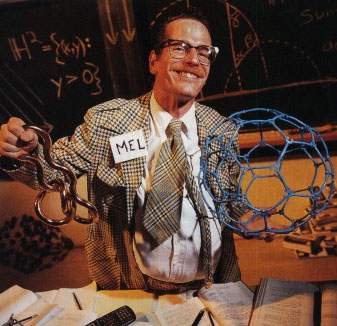
Colin Adams
Williams College
Williamstown, Massachusetts, USA
Colin Adams is the Thomas T. Read Professor of Mathematics at Williams College. He is particularly interested in the mathematical theories of knots and tilings and loves doing research with students and convincing students that math is fun. He is the author of numerous research articles, and the books “The Knot Book”, “The Tiling Book”, “Riot at the Calc Exam and other Mathematically Bent Stories”, “Do Androids Dream of Symmetric Sheaves and other Mathematically Bent Stories”, the comic book “Why Knot?”, and the math novels “Zombies & Calculus” and “Lost in the Math Museum”. He is the co-author of “How to Ace Calculus: The Streetwise Guide”, “How to Ace the Rest of Calculus: the Streetwise Guide”, “Introduction to Topology: Pure and Applied” and “Calculus”, with Rogawski and Franzosa. A recipient of the Haimo Distinguished Teaching Award from the MAA and the Robert Foster Cherry Teaching Award, he has also served as a Sigma Xi Distinguished Lecturer. He has various other alter egos for talks, including Mel Slugbate and Sir Randolph Bacon III. He is also the humor columnist for the Mathematical Intelligencer.
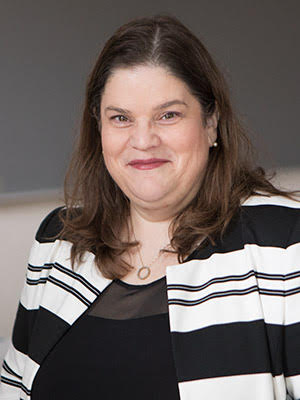
Lisa Lunney Borden
St. Francis Xavier University
Antigonish, Nova Scotia, Canada
Lisa Lunney Borden is a Professor in the faculty of education at St. Francis Xavier University who holds the John Jerome Paul Chair for Equity in Mathematics Education striving to improve outcomes in mathematics for Mi’kmaw and African Nova Scotian youth. Prior to coming to StFX, she had a teaching career in We’koqma’q First Nation where she spent ten years as a secondary mathematics teacher, a vice-principal and principal, as well as the provincial mathematics leader for all Mi’kmaw Kina’matnewey schools in Nova Scotia. Lisa credits her students and the Mi’kmaw community for inspiring her to think differently about mathematics education which continues to shape her work today. She is committed to research and outreach that focuses on decolonizing mathematics education through culturally based practices and experiences that are rooted in Indigenous languages and knowledge systems. She is a sought-after speaker nationally and internationally and has a passion for working with teachers and their students. Lisa has helped to create the Show Me Your Math program that inspired thousands of Mi’kmaw youth to share the mathematical reasoning inherent in their own community contexts, and an outreach program called Connecting Math to Our Lives and Communities that brings similar ideas to Mi’kmaw and African Nova Scotian youth as an afterschool program. She currently serves as the president of the Canadian Mathematics Education Study Group and sits on the Canadian Mathematical Society’s reconciliation committee.
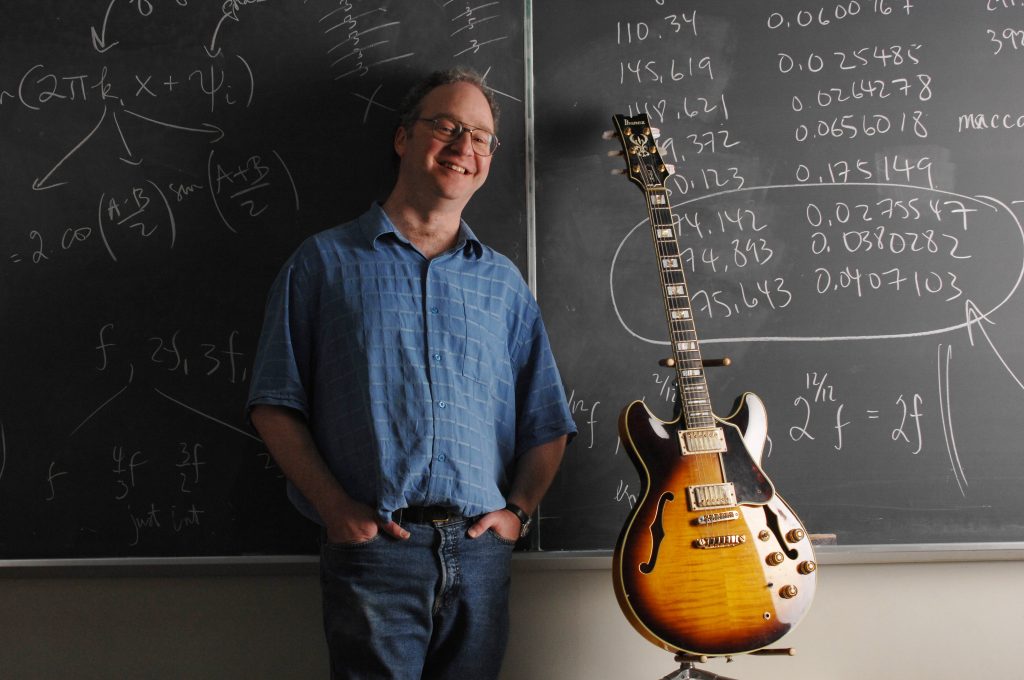
Jason I. Brown
Dalhousie University
Halifax, Nova Scotia, Canada
Jason I. Brown is a professor in (and chair of) the Department of Mathematics and Statistics at Dalhousie University in Halifax, Canada, and has written over 100 research articles in graph theory and combinatorics. His work that used mathematics to uncover mysteries surrounding the music of The Beatles has garnered worldwide attention, including national and international newspapers, CBC, BBC and NPR radio, Guitar Player magazine, and the web sites of Wired and the Wall Street Journal. His most recent research that utilized machine learning to uncover who likely wrote the music to “In My Life” was featured in the inaugural issue of the Harvard Data Science Review. He has also written a number of textbooks (Mathematics for the Liberal Arts, Elementary Linear Algebra, and Discrete Structures and their Applications) as well as Our Days Are Numbered, a book for the general public that explains the mathematics in everyday life.
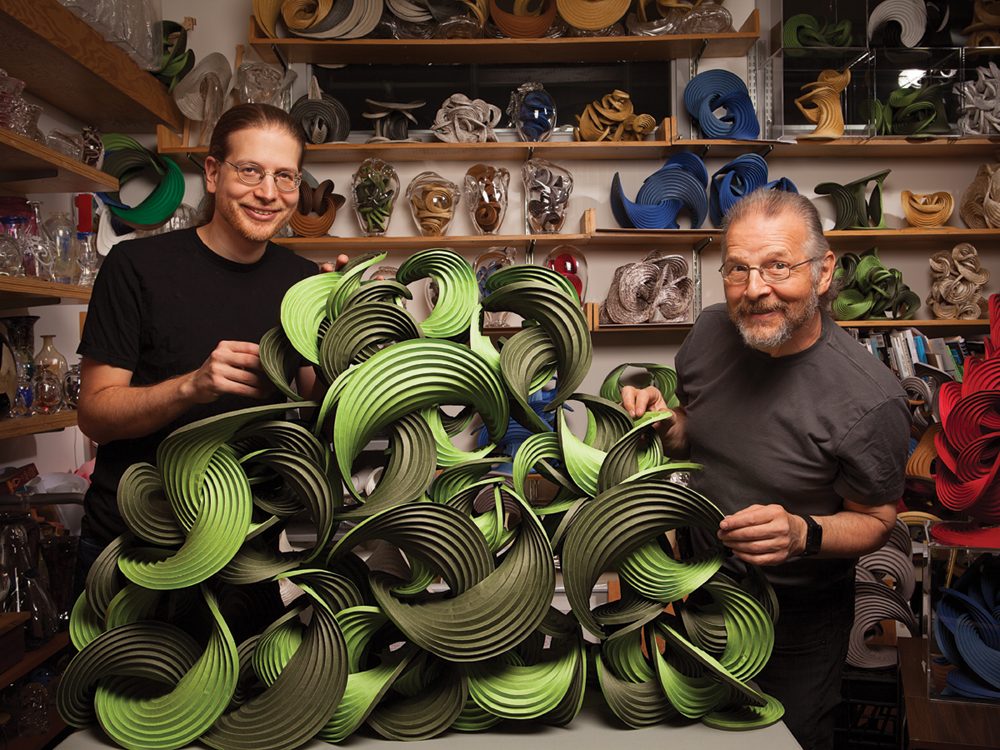
Erik Demaine & Martin Demaine
Massachusetts Institute of Technology
Cambridge, MA, USA
Erik Demaine and Martin Demaine are a father-son math-art team. Martin started the first private hot glass studio in Canada and has been called the father of Canadian glass. Since 2005, Martin Demaine has been an Artist-in-Residence at the Massachusetts Institute of Technology. Erik is also at the Massachusetts Institute of Technology, as a Professor in computer science. He received a MacArthur Fellowship in 2003 as a “computational geometer tackling and solving difficult problems related to folding and bending–moving readily between the theoretical and the playful, with a keen eye to revealing the former in the latter”. In these capacities, Erik and Martin work together in paper, glass, and other material. They use their exploration in sculpture to help visualize and understand unsolved problems in science, and their scientific abilities to inspire new art forms. Their artistic work includes over 300 curved origami sculptures, including pieces in the permanent collections of the Museum of Modern Art (MoMA) in New York, and the Renwick Gallery in the Smithsonian. Their scientific work includes over 100 published joint papers, including several about combining mathematics and art. They won a Guggenheim Fellowship (2013) for exploring folding of other materials, such as hot glass.
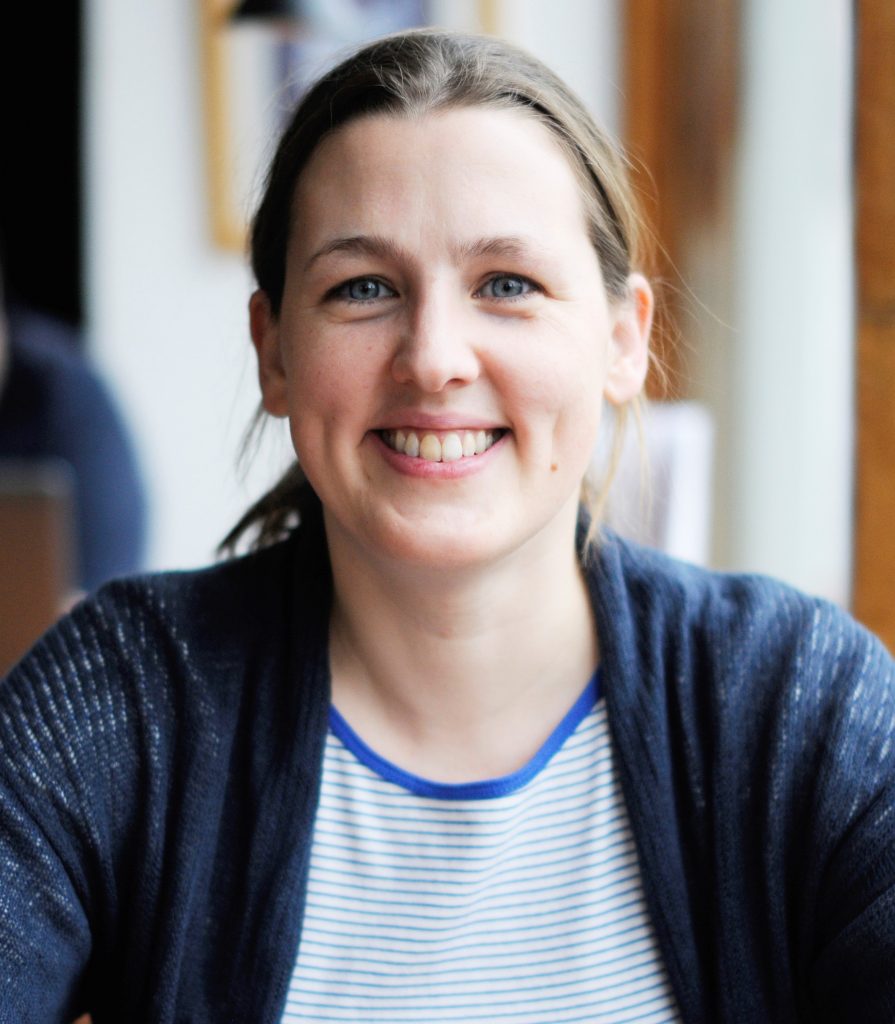
Sarah Hart
Birkbeck, University of London
London, UK
Sarah Hart is Professor of Mathematics at Birkbeck, University of London. In 2020 she was appointed the 33rd Gresham Professor of Geometry, the oldest mathematics chair in the UK dating back to 1597. She is the first woman ever to hold the position. She is also President of the British Society for the History of Mathematics. Hart’s research is mainly in group theory, which is the main tool used by mathematicians to understand symmetry. She is passionate about communicating mathematics and is a sought-after public speaker. She is particularly interested in the links between mathematics, culture and creativity: many of her public lectures are on these topics. Her book “Once Upon a Prime”, about mathematics and literature, is published in 2023.
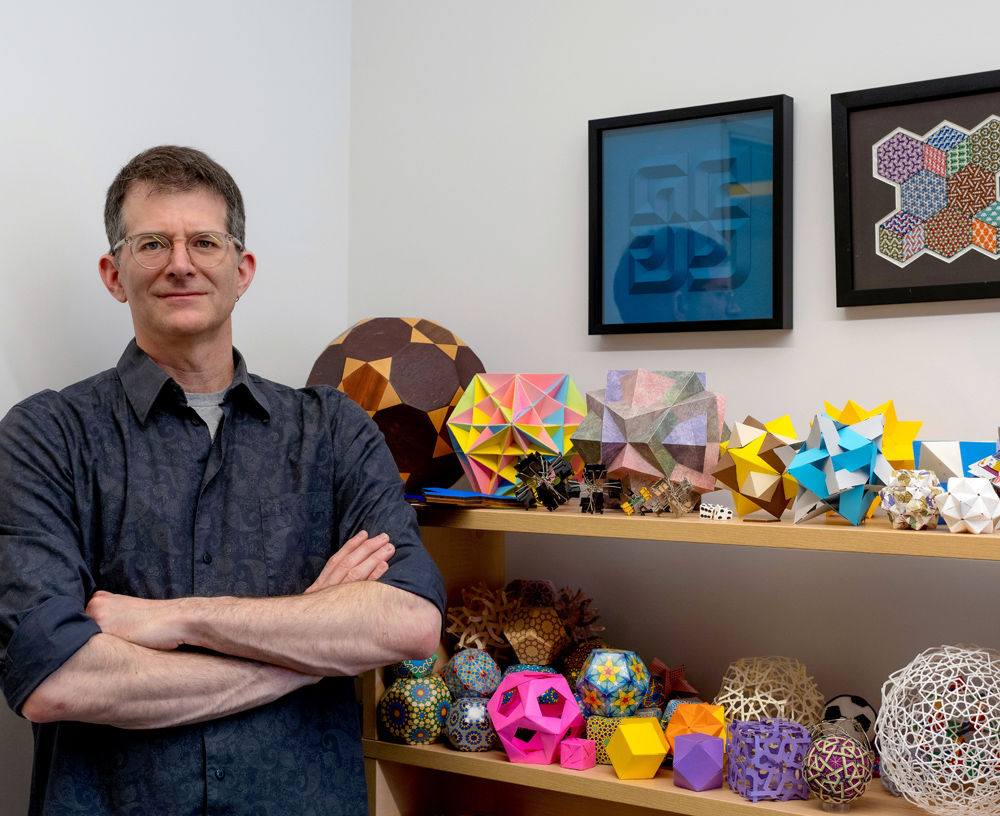
Craig S. Kaplan
University of Waterloo
Waterloo, Ontario, Canada
Craig S. Kaplan is an Associate Professor in the School of Computer Science at the University of Waterloo. He studies the application of computer graphics and mathematics to problems in art, architecture and design, and is an expert on topics such as Islamic geometric patterns and computational applications of tiling theory. He has been involved with the Bridges conference since 1999. He currently serves on the board of the Bridges Organization and helps to run the annual conference.
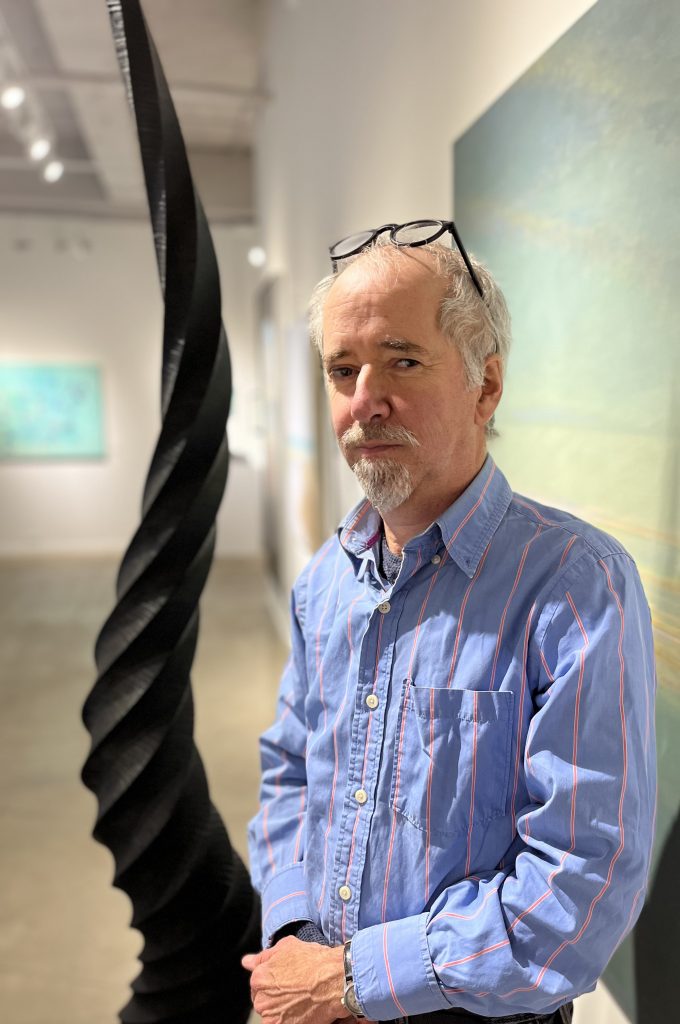
John Macnab
Halifax, Nova Scotia, Canada
John Macnab is a craftsman whose medium is the machine tool. He has been deconstructing industrial era machinery and reconfiguring it to generate a family of forms unprecedented in sculpture, manufacturing, or even in geometry. His process has evolved to include a planetary headstock, elliptical gears, “fusee” mechanisms and other devices appropriated from the history of western technology. The pieces he makes with this machine explore the symmetries of compound conical helices, which to some extent are anticipated in nineteenth century studies of biological growth and in twentieth century orbital mechanics, but which have never been developed to this complexity or achieved in material form.
Born in Toronto, Ontario (1961), John moved to Nova Scotia as a child in 1970. He is a graduate of Nova Scotia College of Geographic Sciences Cartography Program. In 1981 he went on to work for three years in the mapping related field. He then attended Dalhousie University for one year (1985) but was quickly pulled astray by a growing interest in woodworking, machining and design.
He has maintained an independent workshop on the Halifax waterfront since 1986. He is also known for his pursuit of fly fishing, hiking and canoeing.
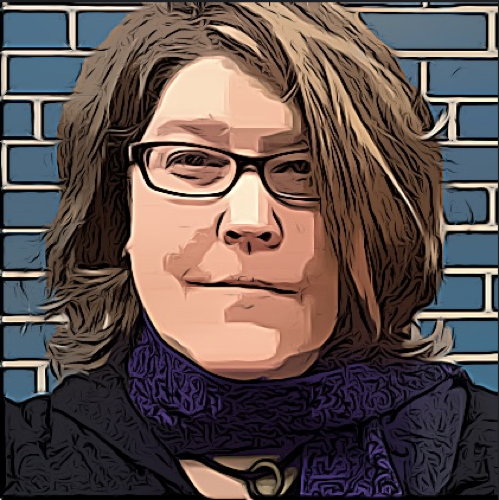
Laura Taalman
James Madison University
Harrisonburg, Virginia, USA
Laura Taalman is a Professor of Mathematics at James Madison University who combines research interests in knot theory, games, puzzles, and patterns in her academic and artistic pursuits. Also known as “mathgrrl”, Dr. Taalman is a computational designer inspired by mathematical structures such as spatial graph configurations, optimally-rolling knots, and combinatorial patterns. She has created and shared hundreds of digital models with the 3D printing community, and published a large collection of articles and tools to help others get started with digital fabrication technologies. Dr. Taalman’s recent work centers on mathematical pattern generation within the domain of fiber arts, including knitting, crochet, vintage punch card knitting machines, and loom weaving. She is a Project NExT Fellow, a recipient of the Alder Award, Trevor Evans Award, and SCHEV Outstanding Faculty Award, and has been featured on Thingiverse, Adafruit, and Science Friday.
